
views
Selecting a Land-Surfing Board
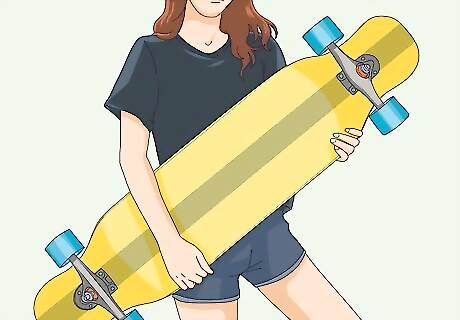
Look at longboards at a local skateboarding shop. Wherever you choose to do your land-based surfing, you’ll need a type of longboard to use. Longboards, unlike typical skateboards (sometimes referred to as “short boards”), are never used for tricks, but only serve to provide transportation and to descend hills. Long boards come in a variety of sizes (both lengths and widths), and can be customized with different sizes of wheels. Ask the skateboarding shop staff what they would recommend for someone with your level of experience (likely novice). Although you can purchase a longboard online, you’ll be able to look at and possibly stand on a variety of boards if you visit a physical skate shop.
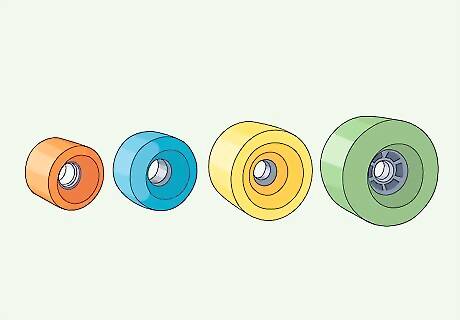
Select an appropriate wheel size. When selecting the wheels, smaller wheels will give you a lower center of gravity and probably more accurately mimic the feeling of “surfing” along the ground. However, if you think you’ll be doing land-based surfing in an area with rocks and choppy concrete, opting for larger wheels will give you more ability to roll over these small obstacles. Ask for a wheel-size recommendation at the local skate shop. Explain to the employees (who will doubtless all be skaters themselves) that you’re planning to try land-based surfing and ask what size wheel they would suggest.
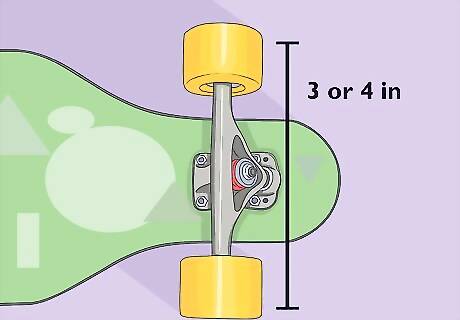
Find a board with wide-set trucks. Trucks are the metal attachments which fix to the bottom of a longboard (or any type of skateboard); each truck has an axle running through it, and one wheel attaches to each side of the truck. Since you’ll want your land-surfing longboard to mimic the feeling of a surfboard and to be able to turn relatively quickly, choose a longboard with plenty of distance between the trucks to provide a smaller turning radius. You’ll want one truck to be close (within 3 or 4 inches) to the nose (front) of the longboard, and one truck to be near (within 4 inches) the tail (back) of the longboard.
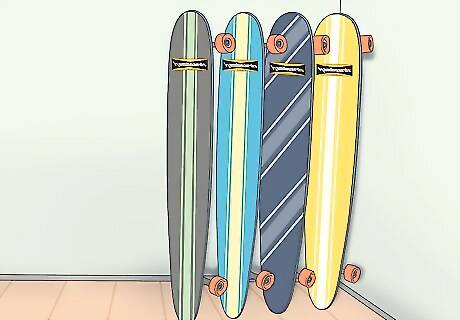
Check out the Hamboards selection. Hamboards is the brand most associated with land-based surfing; they manufacture high-quality longboards that mimic the feeling of riding waves. Hamboard boards, and other longboards designed to be ridden like a surfboard, are designed to ride smoothly and are used by both surfers and skateboarders to perform surfing-inspired maneuvers (carving turns, hanging ten off the nose of the board, etc.) on concrete hills. Hamboards are manufactured both in the United States (Huntington Beach, CA) and in Europe (Amsterdam). You can order Hamboards online, but if you live near either Huntington Beach or Amsterdam, stop by a local skate shop and check out the boards in person.
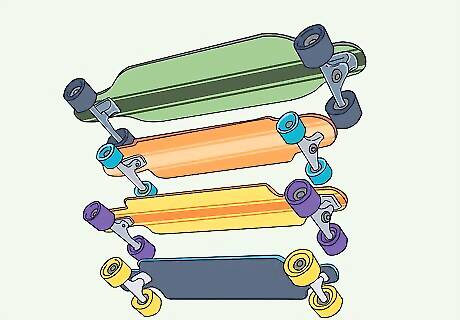
Select a shape, size, and length of longboard. Longboards that have been designed for land-based surfing come in a variety of lengths and shapes, from short and rounded—which facilitates “pumping”—to long and streamlined, which facilitate speed and carving. Boards range in size approximately from 2 to 5 feet long, and in width from 14 to 10 inches. To determine which board is best suited to your needs, consider if you want a board that’s more designed for carving and can make sharp turns, or one more suited for long-distance cruising. Additionally, certain boards are more or less portable, depending on their size, and others are designed to allow riders to “nose ride” or mimic surfing by standing at the very front of the board. These longboards can get expensive quickly. For example, Hamboard prices start around $155 and rise to $500, so you may need to save up before making a purchase.
Choosing a Location to Surf on Land
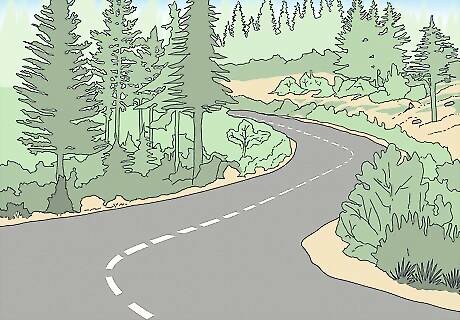
Look around your town or city for hills. The ideal hill for longboarding or land-based surfing is one that is relatively free from traffic or pedestrians, long enough to allow you to skate for several minutes without having to stop and walk, and made with relatively smooth concrete. Drive, walk, or bike around town to scope out potential locations. If you live in a rural area, you’ll likely need to travel in order to find a location for land-based surfing. There are types of skateboards with large rubber wheels suitable for rolling over dirt and rocks, but using these boards is not considered a type of land surfing.
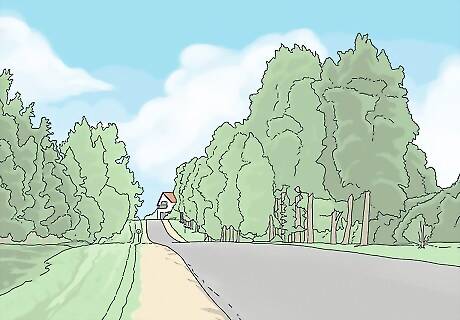
Check out suburban areas. Suburbs often offer good longboarding locations, as they are not as densely populated as more urban areas, and feature interconnected, wide roads. Look for roads that are smooth and well-maintained. If you find yourself skating down a section of rough asphalt or a poorly maintained section of road, you may have a harder time maintaining speed and keeping your balance when carving. Be mindful to avoid stretches of road or sidewalk that have potholes, down trees (or other obstructions), or that end abruptly at the bottom of a hill.
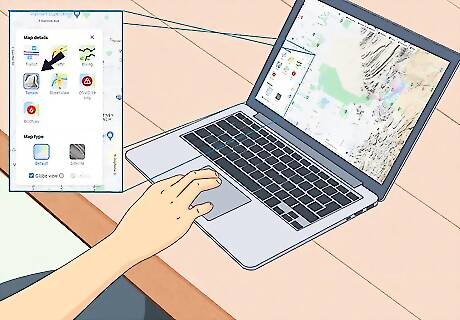
Locate suitable hills using Google Maps. If you’re running out of ideas of locations to use for land-based surfing, open your computer and find a hilly area near your location on Google Maps. On the left side of the screen, turn on the “Terrain” feature; this will show the topography of the region. Shaded ground indicates the presence of hills and other topographical features; zoom in on areas of interest. Follow the course of the roadway to make sure that it doesn’t feature any impossibly tight turns or dead ends. If the road looks safe and has the right amount of incline, grab your board and check it out
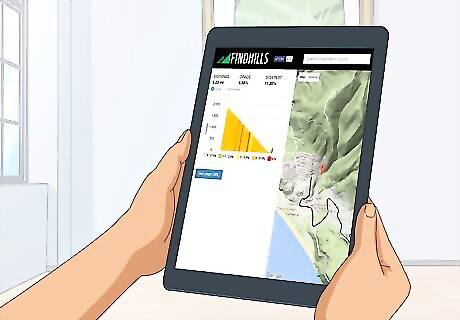
Find hills quickly and accurately using Findhills. You can also use the website Findhills to locate hills for longboarding or land-based surfing. Findhills will use an online map to indicate the distance that a road along a specific hill covers, the relative steepness of the road. The website will also identify the single steepest section of the road you’ve input. The Findhills website provides a helpful tutorial if you find its interface confusing. It’s generally straightforward: click two places on a map to find the change in elevation between the locations.
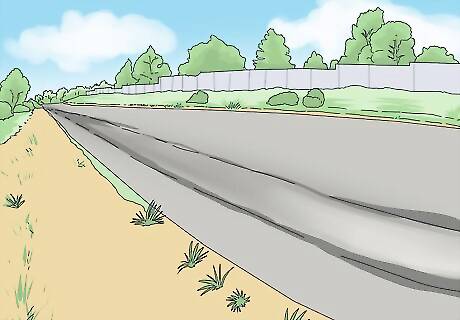
Check for nearby large drainage ditches. Longboarders and land-based surfers often make use of dry drainage ditches, as they often provide an ideal location for skating: away from cars and pedestrians, made entirely of smooth concrete or cement, and at a consistent downhill angle. If you find a suitable drainage ditch, try carving up and down the walls to mimic the feel of surfing a wave. Drainage ditches used for land-based surfing should be at least 10–15 feet wide; don’t try to skate in a smaller, backyard-sized ditch.
Practicing Your Land-Based Surfing
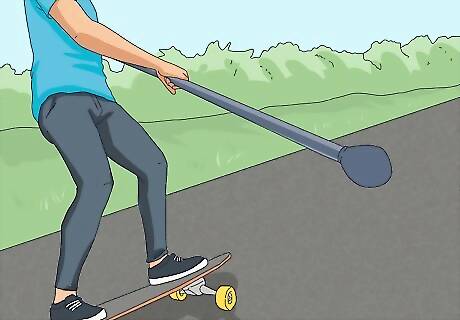
Try out a landpaddle. A landpaddle is a lightweight metal pole, several feet long, which has a hard plastic knob on the end. Land-based surfers will often use a landpaddle to help balance, carve, and facilitate sharp turns while on their longboard. When you use a landpaddle while surfing, press the hard rubber tip against the ground to keep your balance when you’re leaning to make a sharp carve. You can also use the landpaddle to propel yourself without using your feet.
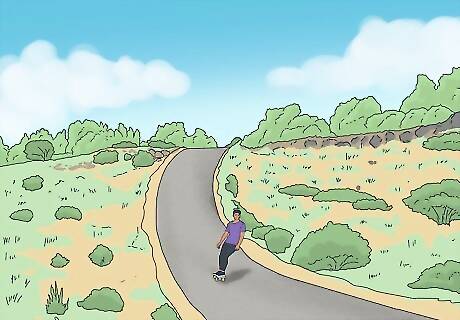
Try going down a small hill before you move up to steeper descents. If you haven’t skateboarded, snowboarded, or surfed much before, just balancing on a longboard can be tricky. Practice on a small hill or even on flat ground: push yourself along with your foot (or paddle), make a few turns, and get a feel for the center of gravity of the longboard. As you gain more confidence while skating, you can move on to steeper and longer hills.
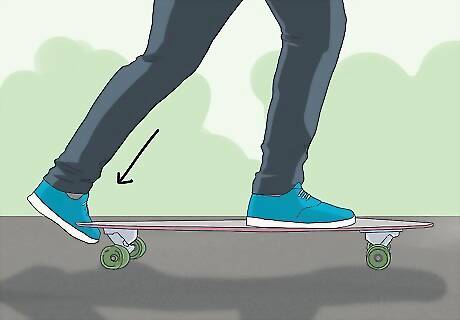
Practice stopping while skating down a hill. It can be difficult to slow or stop a speeding longboard, but it’s a necessary skill. You can slow down by dragging a foot behind you, by steering the board uphill, or by dragging your landpaddle along the cement. If you need to dismount suddenly, you can just leap off the board and take a few running steps to slow yourself down, then retrieve your longboard.
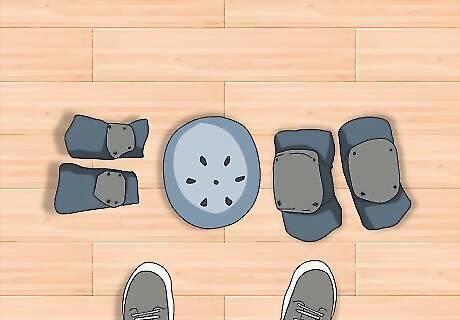
Use the proper safety gear when skating. When skating down hills or on roads, plan to wear a helmet—and perhaps knee and elbow pads as well—since you’ll be putting yourself at risk by moving at fast speeds over hard cement, concrete, or asphalt. It’s especially important to wear safety gear when practicing. After you’ve become proficient at land-based surfing, you can decide whether or not you want to keep wearing safety gear. When you first start out, though, you’re certain to fall many times and need to protect yourself accordingly. All of these safety items can be sold at your local skateboarding shop. You’ll need to be especially careful and aware if you’re skating on a roadway that’s currently in use by motor vehicles.
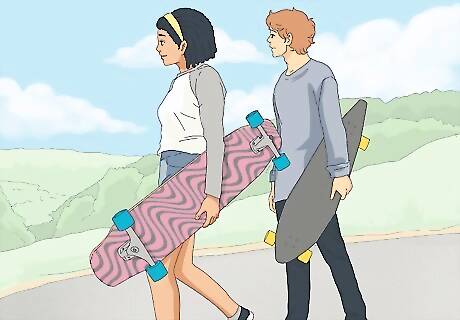
Find some friends to ride along with. Like surfing itself, land-based surfing can be a very communal sport; it’s fun to spend an afternoon descending hills and drainage ditches with friends, and a great way to meet new people as well. Other land-based surfers—especially more experienced ones—will likely also have suggestions of new hills to ride or drainage ditches to skate through. If you’re practicing land-based surfing on or near a roadway, make sure to check for traffic before venturing into the street.


















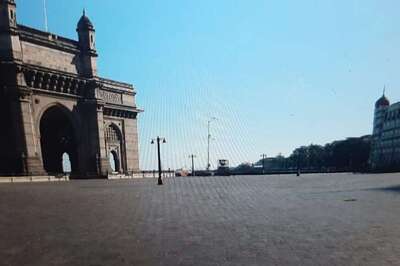
Comments
0 comment